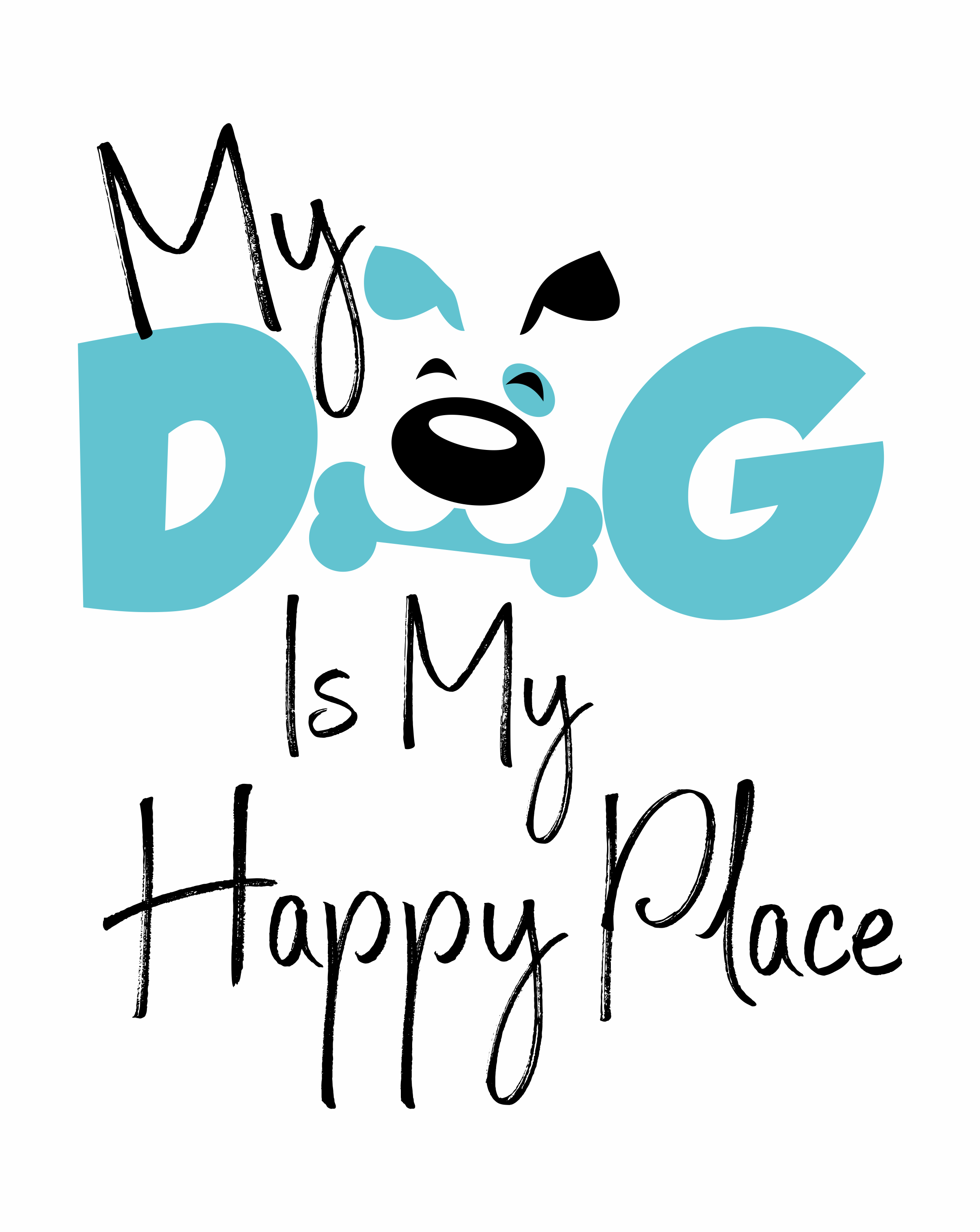4 Ways To Identify High Prey Drive in Dogs & How To Manage It
What is prey drive in dogs? Dogs are carnivores descended from wolves who practice predatory behaviors to feed themselves and their families. For wild dogs, hunting instincts are a matter of survival. For domesticated dogs, on the other hand, the instincts to chase and catch moving objects can be a bit of a nuisance, and potentially dangerous.
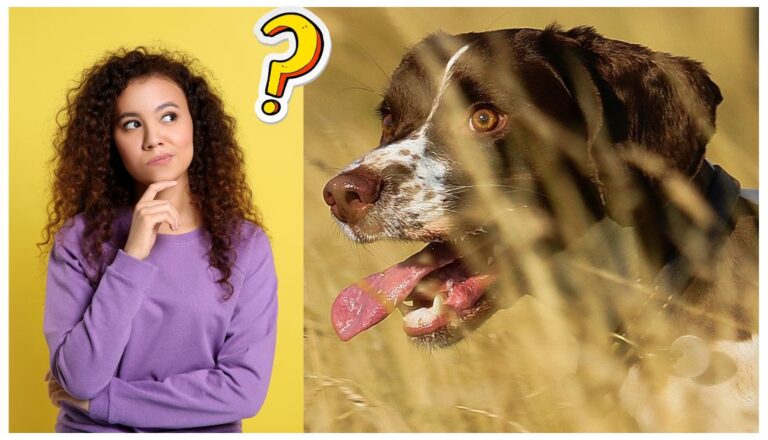
Simply put, dogs with high prey drive enjoy chasing other animals and moving objects, capturing them, and potentially—for lack of a better term—dispatching them.
Is High Prey Drive Good or Bad?
High prey drive is neither good nor bad, but simply a factor dog owners need to consider when they choose a breed/canine companion.
If you are a rancher who trains herding dogs, or a hunter living in a rural area who hunts with hunting dogs, prey drive is definitely a desirable trait. On the other hand, if you live in an urban area, own small animals like cats or rabbits, or even want a dog who can socialize happily with lots of other dogs, high prey drive can be an undesirable trait.
Regardless of how much you value a dog’s prey drive for your lifestyle, positive reinforcement dog training or work with a professional dog trainer can help you harness this instinct to suit your needs as well as your dog’s.
When Can High Prey Drive Be Dangerous?
It’s perfectly natural for dogs to have at least some amount of prey drive, but dogs with extra-strong prey drives can be a danger to themselves and other animals. Some dangerous behaviors dogs with high prey drive might engage in include:
- Chasing small animals
- Chasing small dogs
- Biting/nipping at small animals and children
- Chasing cars
The instinct to chase cars or other animals is especially dangerous outdoors where dogs may get loose, run away, or sustain serious injuries.
4 Key Signs of High Prey Drive in Dogs
Wondering whether your dog is just playful, or could have a high prey drive? Take a look at some of these signs of high prey drive and see how many your dog checks off the list.
1. Hyperfixation & Watchfulness
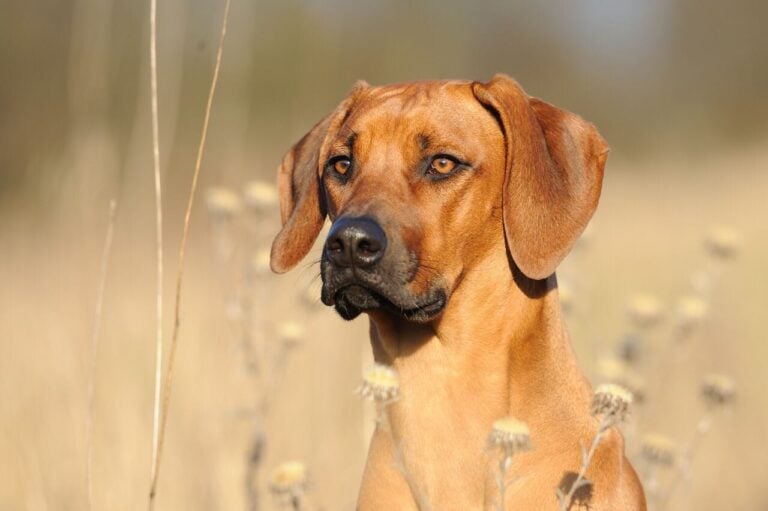
One of the earliest signs of prey drive in dogs is intent watchfulness and fixation, particularly on moving objects, small animals, and other dogs. Even young puppies display this behavior, and may sit and obsessively watch birds or squirrels out the window, or begin fixating and staring at other animals on your walks. Some dogs with high prey drive may also hyperfocus on toys like balls.

Hunting breeds like sighthounds and retrievers are particularly visual dogs and will start watching for movement and prey at just a few weeks old. Notice the focused gaze, forward body language, alert noses, and wide open eyes.
2. Over Stimulation
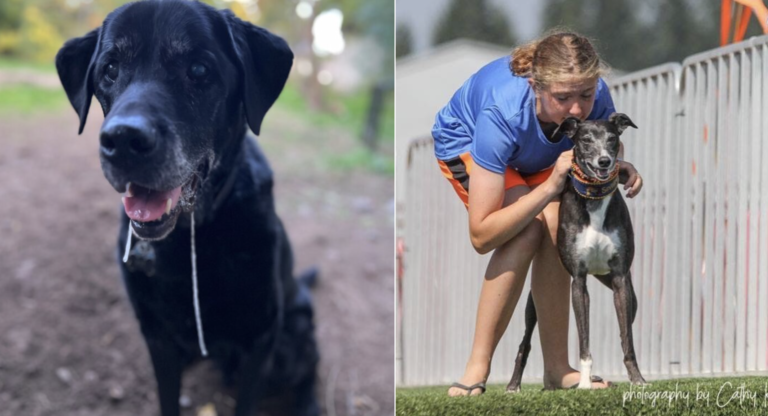
A step beyond enjoying the visual stimulation of small animals or toys moving, another of the key signs of prey drive in dogs is over stimulation and heightened excitement. Dogs that are focused on “prey” might begin to pant, drool, make noises like yips or barks, and display stiff, alert body language. Above you see two examples of heightened excitement related to prey drive.
On the left, the Black Lab is drooling and alert while playing with a ball—chasing a ball is a nice way to let your dog get some of that instinct to pursue out of its system. On the right, you see the famous diving dog Spitfire who has held 21 world records for distance jumping. Spitfire’s tight, alert, ready-to-pounce body language and open mouth show us how excited he is to chase after a toy and dive into a pool to get it.
3. Stalking
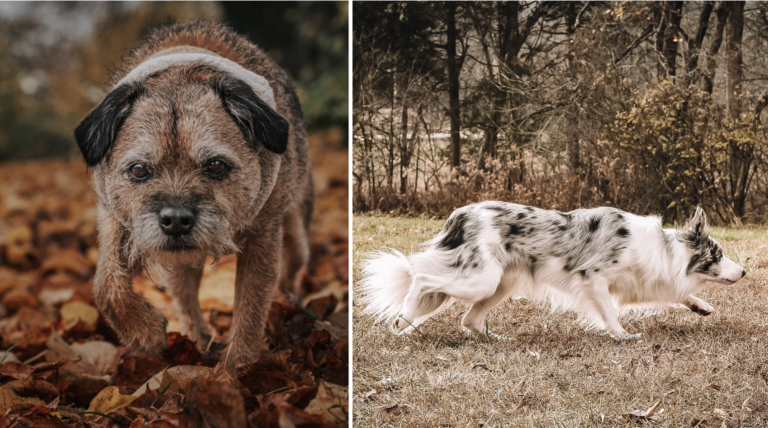
A good sign that your dog’s urge to chase isn’t purely playful and instead is a sign of high prey drive is stalking behaviors. Dogs that “stalk” their “prey” will lower their bodies and heads while keeping intense visual focus on their target. Above you can see both a Border Terrier and a Border Collie showing a stalking stance.
Dogs with high prey drive may do this in your yard when they see small animals, but many will also perform this behavior on walks, and may hyperfocus and “stalk” other dogs and their owners. Keep an eye out for how your pup responds when they see another dog.
4. Lunging, Tagging, & Biting
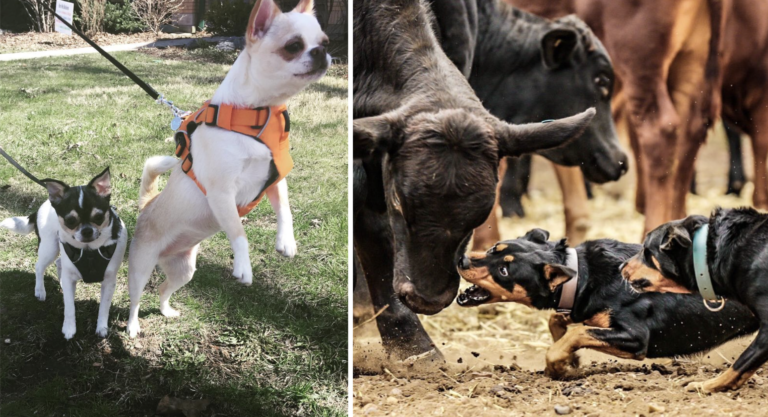
When combined with other signs of high prey drive, behaviors like lunging at, tagging, or biting other animals is a sure sign of high prey drive. Tagging is similar to biting, but is a behavior most often seen in herding and working breeds. A tag is like a warning bite or a short quick surface-level nip to let the other animal know to stay in line.
Here’s an example of a Kelpie tagging a cow who is pushing the envelope—this usually doesn’t hurt when coming from trained herding dogs, but it’s not something to encourage in family pets.
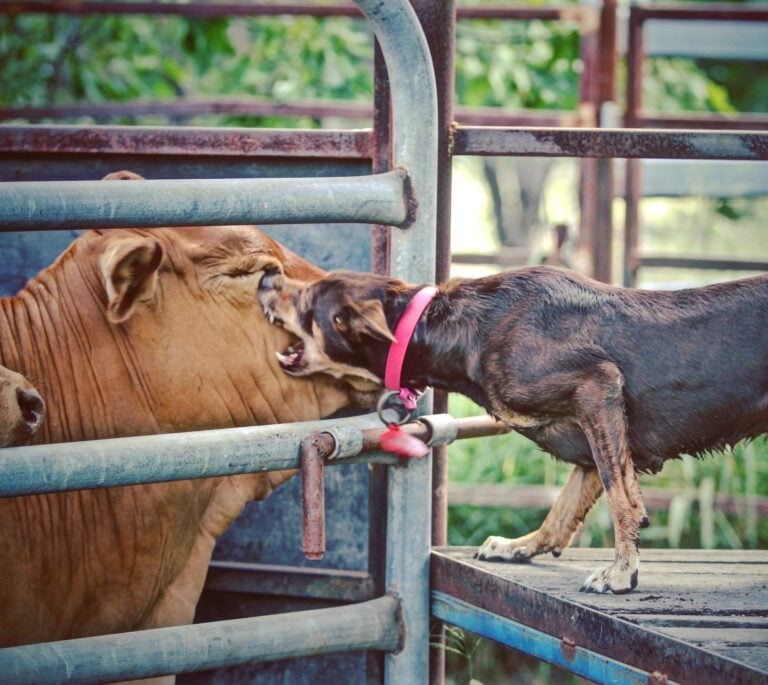
7 Simple Tips for Taking Care Of Dogs with High Prey Drive
It’s only natural for dogs to have at least some prey drive, but if you find yourself with a dog who has a high prey drive, you may find yourself spending extra time managing it. High prey drive isn’t a bad thing, but it is something you need to both enrich and control. Your dog’s instincts to chase and hunt can be fulfilling and rewarding for both of you, but they can also turn into a problem if you don’t take the time to teach your dog how to manage their urges.
Here are a few pieces of advice for keeping a dog with high prey drive safe while also giving them a positive outlet for their instincts.
1. Fence In Your Yard
If you have a high prey drive dog, you know the fear of them chasing a squirrel or a cat out of your yard and off into the ether. One of the best ways to keep your dog safe from accidentally wandering off after prey is fencing in your yard. A tall, well-secured fence can give you so much peace of mind and make your backyard a safe place for your pooch to play.
2. Perfect Your Dog’s Recall
Dogs with high prey drive are more likely to run off than dogs with low prey drive, which is why it’s so important to teach your dog excellent recall. A simple “come” or “here” is all you need your dog to know, but for high-prey dogs, you should be working on this command daily until it is second nature.
3. Always Keep Your Dog Leashed
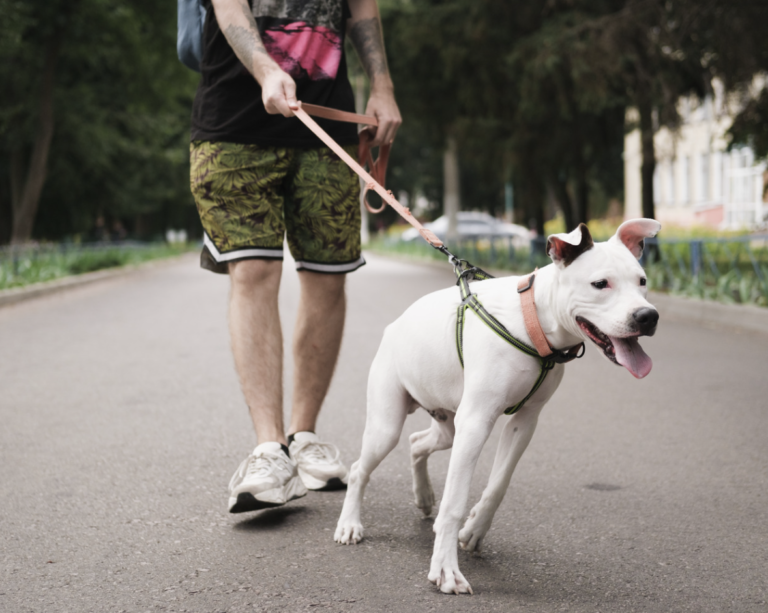
It can be tempting to walk your dog off-leash, especially if you live in a rural area. No matter how good your dog’s recall is, we do not recommend walking them off-leash ever since prey-drive can take over in a split instant. Not only is walking your dog off-leash dangerous for their safety, but you also run the risk of your dog hurting another animal if they aren’t appropriately contained.
4. Learn How To Redirect Your Dog
Redirection is a tool dog trainers use to reduce unwanted behaviors in dogs while still keeping the training positive. If your dog is highly reactive or focused on small animals on walks or in your yard, learning how to recapture and redirect their attention can reduce the chances of them giving chase, and help them manage their instincts in the future.
Carrying high-reward treats or a toy your pet loves to redirect their attention while on walks is a simple way to start. When they see a dog or another animal, try asking them to “look at me” then reward them. Keep repeating this redirection until the distraction has passed.
5. Feed Your Dog’s Need To Chase & Hunt
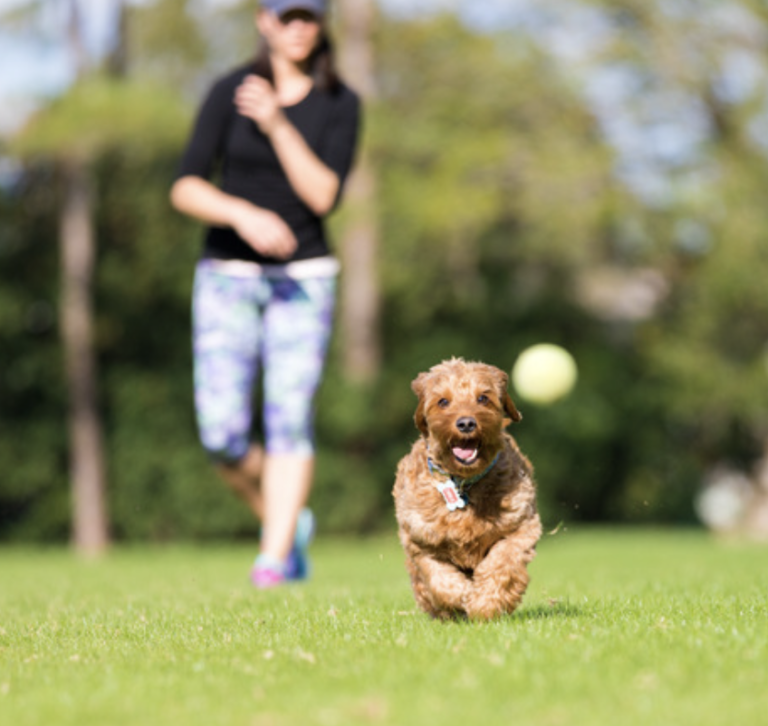
You can’t train prey drive out of a dog, and you shouldn’t want to! Owning a dog means owning a predator—a cute one, to be fair, but a predator nonetheless. Rather than fighting against their need to chase, try enriching this instinct with appropriate and safe chasing opportunities like:
- Playing fetch
- Squeaky toys
- Going for runs together
- Visiting fenced off-leash dog parks
- Canine sports (e.g. flyball, deck diving)
- Scent work and working dog training
6. Teach Your Dog “Leave It”
Like redirection and recall, having a specific command to let your dog know it’s time to ignore what they’re focused on will help you in tons of situations. Whether you teach your dog to “leave it” when they start chasing the cat or to “leave it” when you walk past people with dogs on walks, this command is great for when you need a quick solution.
Once your dog has “leave it” perfected, you can also use it to stop them from eating things they shouldn’t, jumping on visitors, getting into the garbage, etc.
7. Give Your Dog Puzzles

Often, the desire to hunt, stalk, and kill animals has more to do with mental stimulation than physical needs. Domestic dogs don’t chase cats because they are hungry, they do it because they find it stimulating!
Activities like dog puzzles and snuffle mats—in addition to regular training and play—can tire out your dog’s brain and give them the stimulation they are seeking when they chase, stalk, and hunt.
Dog Breeds with High Prey Drive
While all dogs have prey drive, some have more than others. In general, the breed groups with the highest prey drive include hounds, retrievers, herding dogs, working breeds, and terriers. In no particular order, here are a few of the dog breeds with the highest prey drive and instincts to chase.
Airedale Terrier
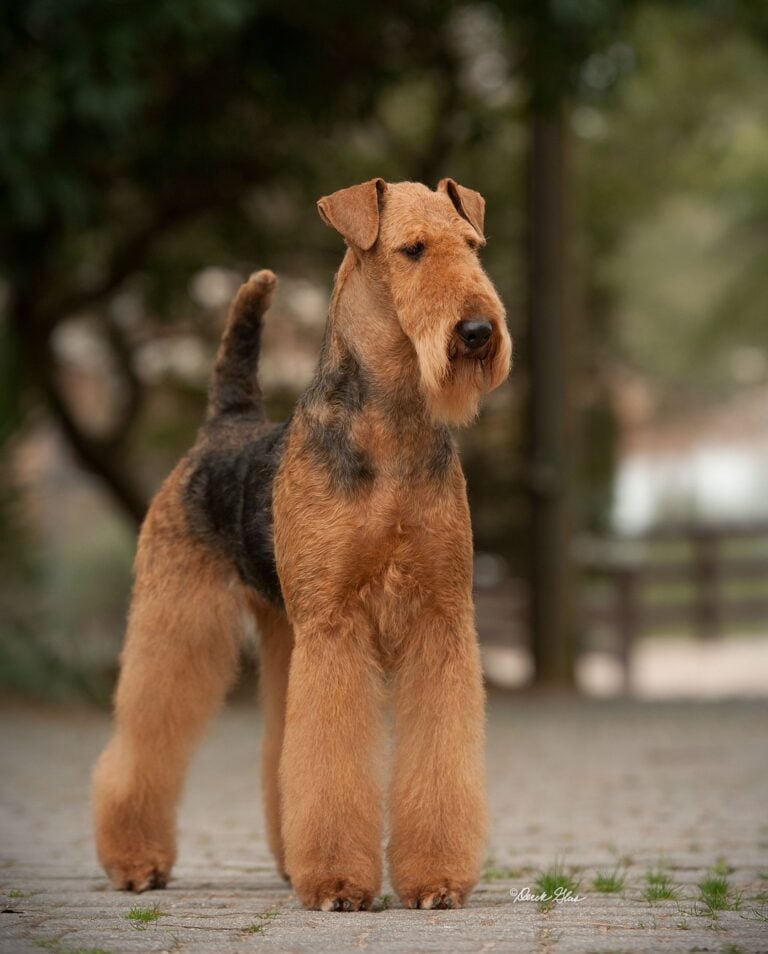
One of the largest members of the terrier breed group and a fearless ratter and small game hunter, the Airedale Terrier is a uniquely versatile breed used for hunting, herding, protection, and work with police and military forces. Quick to pursue and boss everyone around, the Airedale is certainly a high prey drive breed.
German Shepherd Dog
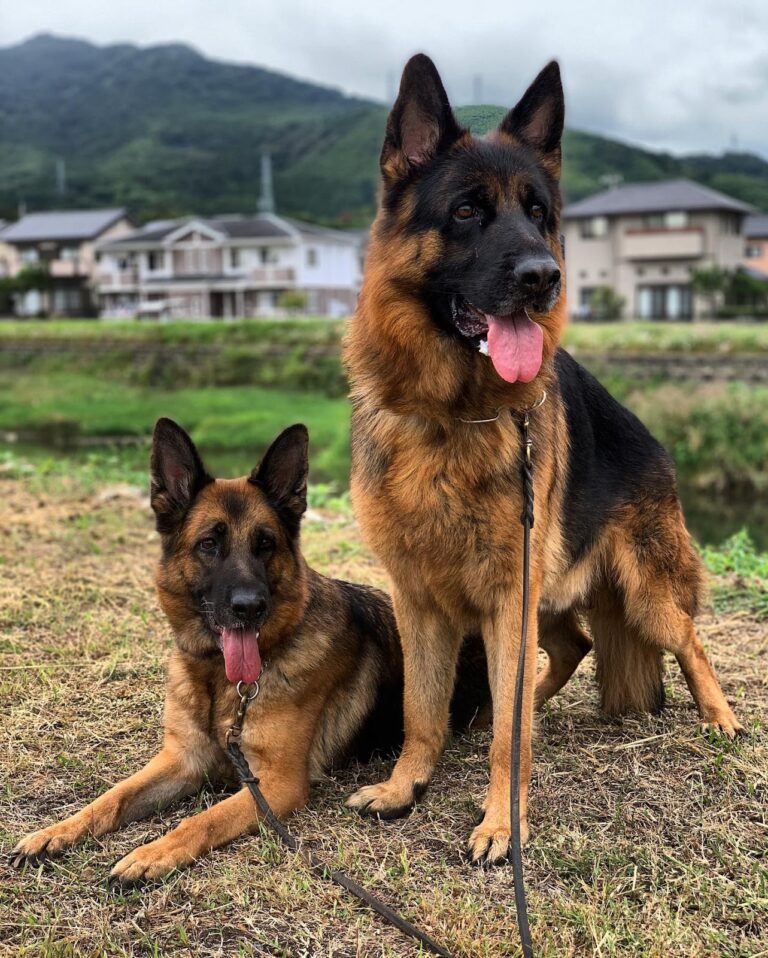
German Shepherds are a member of the herding group, a variety of dogs bred to work in tandem with ranchers to manage, corral, and keep livestock safely organized. German Shepherds were also historically used as cavalry and protection dogs, favored by police worldwide for their incredible ability to pursue and take down targets. With all these traits in mind, it’s no wonder the German Shepherd prey drive is so high.
German Wirehaired Pointer
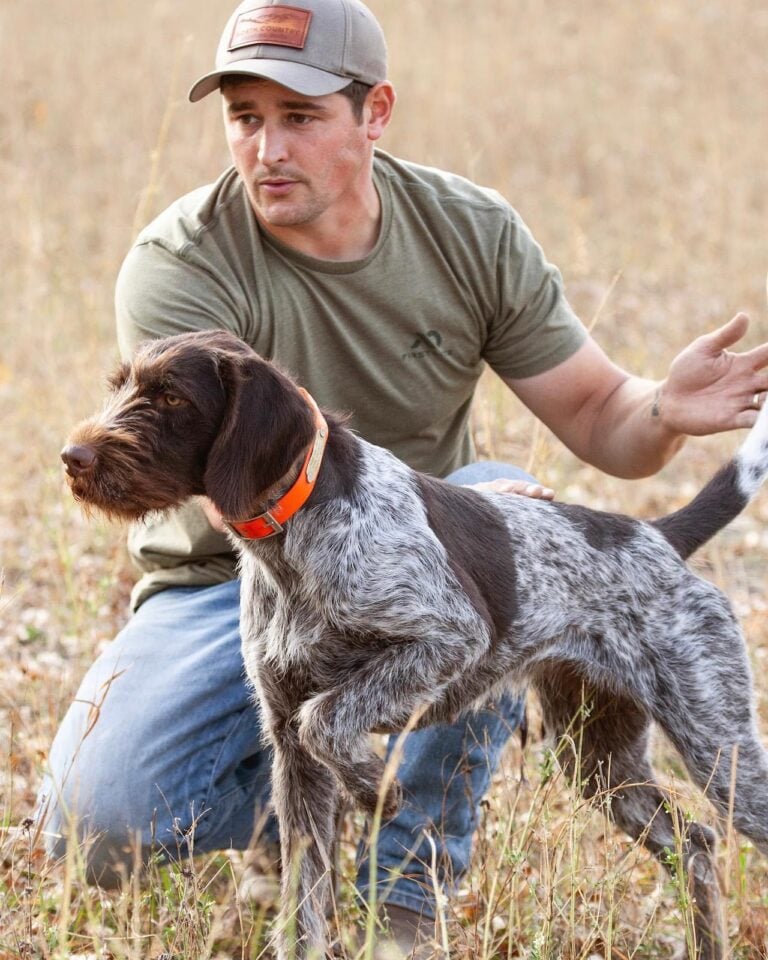
German Wirehaired Pointers and other Pointers in the sporting group are literally bred to point at game! This particular variety of pointer was bred for bird hunting and has excellent eyesight and superior focus to help hunters find and follow well-camouflaged game birds.
Jack Russell Terrier

Jack Russell Terriers are small but mighty ratting dogs with a strong prey drive and endless energy to pursue and dispatch small game. Like most terriers, Russels love to chase and have muscular bodies, quick reflexes, and intense mental focus.
Labrador Retriever
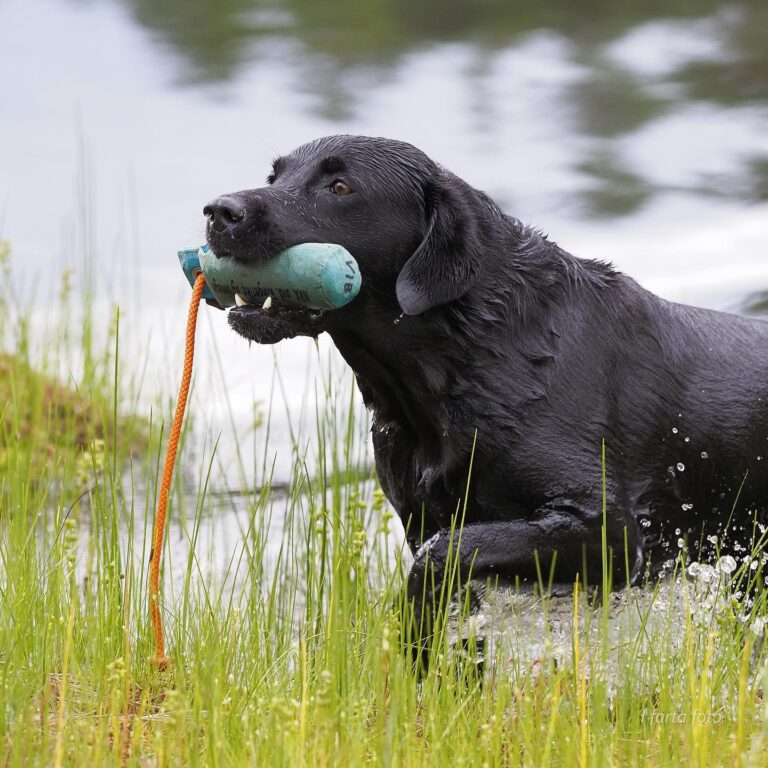
One of America’s favorite breeds, the Labrador Retriever, is also a breed with high prey drive! Bred to pursue and retrieve game birds into the water, Labs love to chase, play fetch, and bring “prizes” to their humans.
Rhodesian Ridgeback
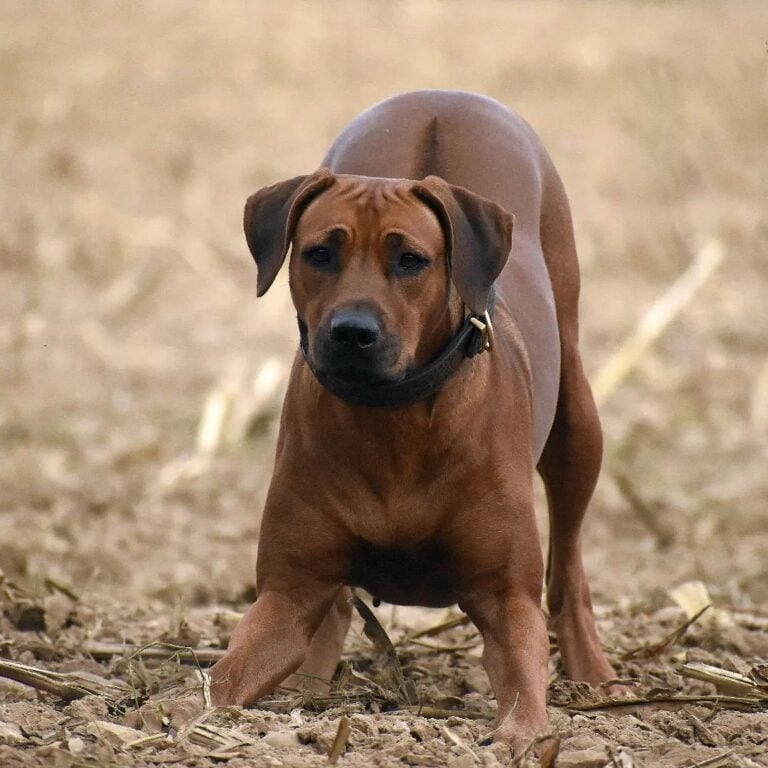
A breed belonging to the hound group, the Rhodesian Ridgeback was bred to be a ferocious and protective dog used by big game hunters and to fend off large predators in South African towns. Reactive, defensive, and strongly loyal, this hound easily earns a spot as one of the breeds with the highest prey drive.
Siberian Husky
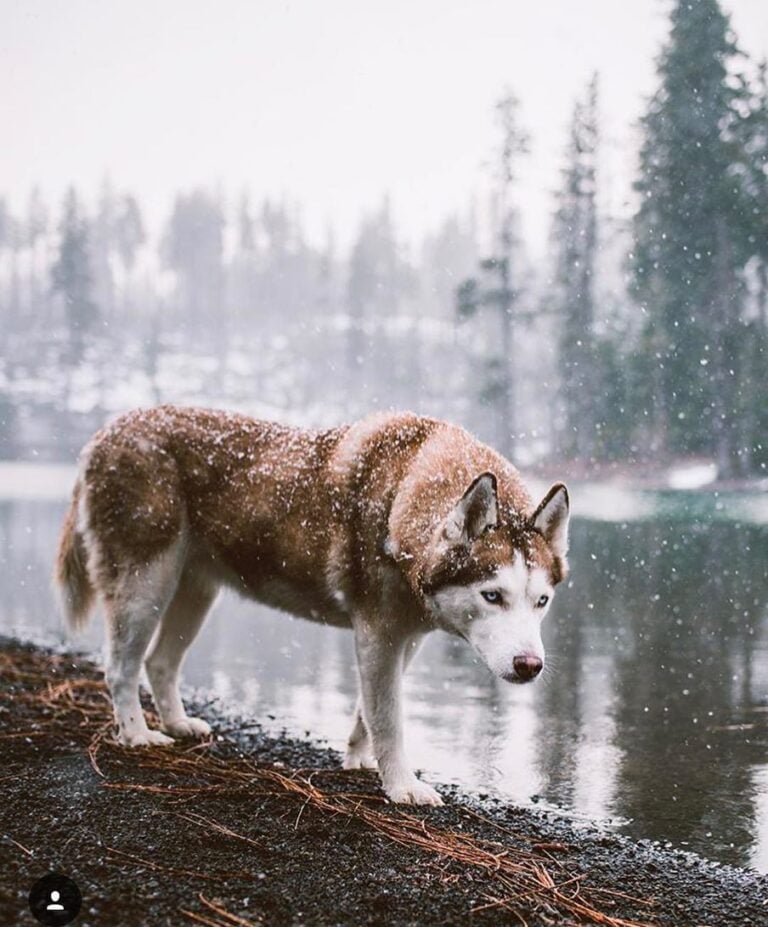
Siberian Huskies are a member of the working breeds group according to the American Kennel Club. While the breed has historically been used for sledding and long-distance endurance hauling, Husky prey drive is high, and Huskies are notoriously quick to chase small animals and cats.
Dog Breeds with Low Prey Drive
While all dogs have some amount of prey drive, there are dogs with low prey drive that doesn’t dominate their personalities. Dogs with lowest prey drive instincts are less likely to chase or pursue other animals, and may be more content to sit and watch, or ignore the chaos entirely. Generally non-reactive to other animals, low prey drive breeds make excellent pets for multi-dog households, homes with small children, or people with other pets like cats and rabbits.
Cavalier King Charles Spaniel

The characteristic soft and loving gaze of the Cavalier King Charles Spaniel isn’t just a ploy to get more treats—this breed is super gentle, loving, and has a low prey drive.
English Bulldog

You’ve probably heard of the ferocious fighting past of the English Bulldog, but today’s Bulldogs are calm, affectionate, and far more interested in napping than paying attention to anything else!
Great Pyrenees
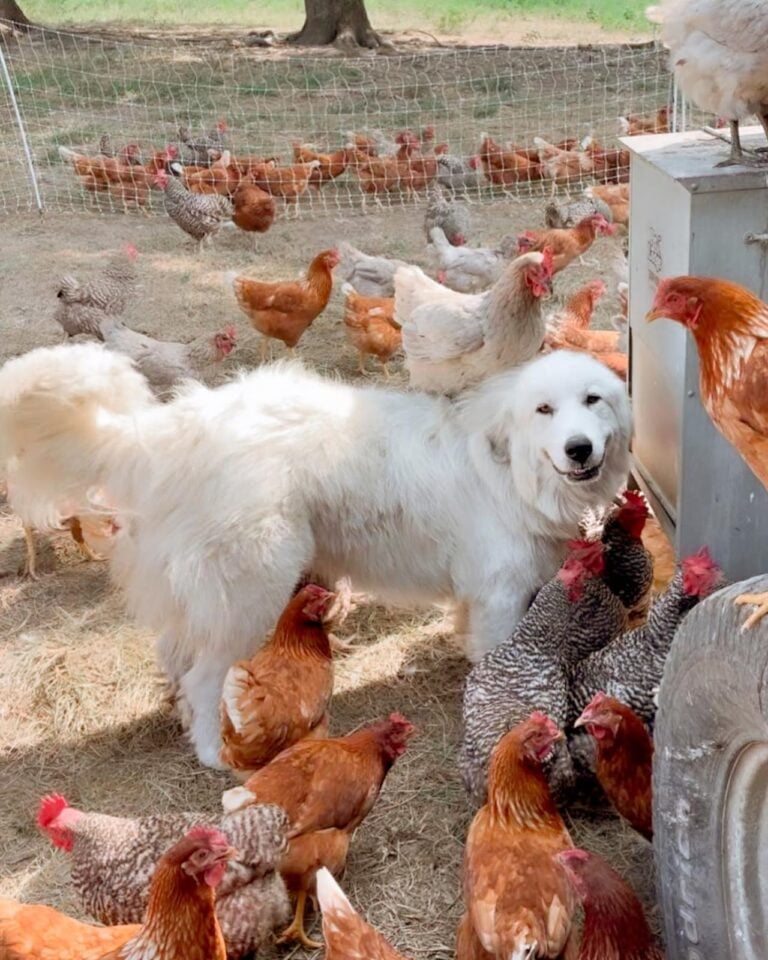
Great Pyrenees are a livestock guardian breed with incredible protective instincts yet very low prey drive. Naturally capable of gaining the trust of small animals, Great Pyrenees and other livestock guardian dogs are the truest gentle giants.
Papillon

Bred to be companion animals of European nobility and famed artists, the Papillon is a sweet and cheerful little dog with a playful personality, but very little prey drive.
Related Articles:
- Love Your Pet? Here’s How to Make Sure They’re Cared for Even When You’re Gone
- How to Calm Your Reactive Dog. What It Is & How To Fix It
- How To Get Rid Of Your Dog Allergies Once and For All
- How to Keep Your Dog Calm in Stressful Situations (Even if They’re Often Anxious)



